Bond Adapt, Microdec and RDB Pronet – What happens when a recruitment software firm is acquired?
In the wake of a series of M&A deals in the recruitment software space – most recently, private equity-backed Bullhorn buying recruitment software supplier Erecruit (formerly known as Bond International Software) the suppliers of Adapt, Erecruit and Tempbuddy, many recruitment business owners on legacy platforms have been left pondering what the changes mean for their agencies. Will these products continue to be developed? How will support work? What options will they have and do they need to consider alternatives?
With 20 years in the recruitment software industry (and some inside knowledge…) I thought it might be interesting to blog on what happens when a recruitment CRM provider is acquired by a competitor?
Is it the start of a new chapter of product upgrades, innovative features and premium service? Is it a sign that you are about to be pressured to trial and migrate to a new platform – or being left to gather dust on an obsolete and unsupported platform?
Acquisitions in any sector never fail to generate excitement
Triggering thoughts of ambitious, high-growth businesses leap-frogging their way to market dominance, news of M&A activity always hits the headlines and provides plenty of fuel for discussion. Headlines today: “Bullhorn buys Bond” are good examples of this.
The announcement by US-based Bullhorn of its acquisition of Erecruit (Bond International Software) – suppliers of Bond Adapt, Tempbuddy, and various other apps – was no different, reinvigorating ongoing industry debate around the fate of legacy customers whose CRM providers are bought out by marketplace rivals.
The Erecruit deal is far from being Bullhorn’s first M&A outing, with the Boston software company led by Art Papas snapping up Salesforce-based ATS providers Talent Rover and Job Science in 2018, and executive search software suppliers Invenias, along with several others before that.
Bullhorn is not the only acquirer in the recruitment software sector. Our group has done a fair bit of it (read on!), and we’ve also seen The Access Group acquire First Choice Software – suppliers of RDB Pronet and Microdec, suppliers of the Profile CRM platform.

Outside of the recruitment sector, the inorganic growth route is a well-trodden path
Many heavyweight tech players have barged their way to prominence by swallowing up neighbours in their space, their acquisition trails often a blend of bolt-ons, mergers and pre-emptive purchases designed to shut out promising rivals.
From a customer perspective, M&A can be a mixed bag.
For some users, the strategy can unlock a rush of game-changing product innovations as complementary tools and teams are synergistically brought together. It can also lead to “encouragement” to switch from what is now a legacy product (but wasn’t yesterday) and encouragement to “trial Bullhorn” or “trial Access Recruitment CRM” and sample the wonderful, shiny future that you didn’t know you needed!
Done right, acquisitions can help software companies accelerate feature development and enhance their offering in a way that would be impossible to match through in-house development, and both new and existing customers should, theoretically, be the beneficiaries of this.
I need to hold my hand up here. I’m Director of Sales and Marketing at Voyager Software and was with the firm at the time of our acquisition by Dillistone Group Plc. I’d like to think that we were an example of an acquisition “done right”. Dillistone Group were strong in executive search (the FileFinder product, from Dillistone Systems, was then, and is now, a market leader in that space) and the Group acquired us because they wanted to move into the broader recruiting market. As a result, the plan was always to invest in us – and they did. Few would argue that this acquisition didn’t benefit the Voyager team or our clients.
That’s not always the case, however. Often the experience is less exciting, heralding a period of uncertainty and disruption as the proverbial rug is pulled from under their feet.
While some customers enjoy the upside of their suppliers’ M&A strategies, those on the losing end of the change can face being left dependent on obsolete products that are no longer developed or supported by the new owners.
A house built on sand
The main challenge with acquisitions in the ATS or CRM sectors is the integral role that these systems play in the customer’s business, which makes M&A moves in this area uniquely problematic.
While suppliers undergoing acquisition in other fields may cause some minor disruption, it’s rarely a cause for a five-bell alarm.
A marketing automation tool or a finance add-on? Typically, not a big deal.
But ATS and CRM systems are the beating heart of most recruitment agencies – the hub around which hundreds of processes are built, and where vital data is stored, annotated and managed in a way that both maintains ongoing revenue and creates future income.
Everything from employee onboarding and search delivery, to client databases and billing workflows, are locked within a centralised system, usually connected to other vital functions such as invoicing, payroll and accounting.

So, when it’s announced that their ATS provider has been acquired, it can feel for many recruitment agency owners as though they’ve built the edifice of their business on a base of shifting sand – a deeply worrying situation with so many of the company’s critical processes at stake. It follows that we always see a spike in sales enquiries and demonstration requests with our Infinity product, being an obvious alternative to the likes of Bond Adapt, Microdec Profile and RDP Pronet, and FileFinder – its sister brand – being an obvious choice for marooned executive search firms.
And the most frustrating part for some of the existing customers?
Inevitably, some customers of the acquired platform have recently moved over from the acquirer’s system – only to land right back where they started from!
What lies ahead for users of Bond Adapt, Microdec and RDB?
Change can take many forms once a platform is sold to a new owner, and probably the most common frustration is a lack of clarity regarding future support for existing customers.
Whilst public PR statements usually promise a rosy outlook of ongoing support for all, the realities are sometimes different, and plans can change fast once acquisitions are completed. It’s worth noting that other products previously acquired by firms such as Bullhorn are no longer actively developed – users of older products are often encouraged to trial Bullhorn and then migrate to it.
Key concerns for legacy customers include:
- Limited product support
Customers of a company acquired by a larger provider may see the new owner restrict or reduce investment in support teams, resources, and services to support users of the legacy platform.
Many M&A deals are built on the premise of realising economies of scale as two companies are combined into one, and this can mean downsizing or laying off support staff.
Sometimes users are switched over to the new owner’s support team, who may have limited knowledge of the acquired product.
- Stagnated product development
There is often a key strategic reason behind an acquisition – a core element of the tool being purchased that the buyer wishes to integrate into their own primary offering. Once this is done, and the IP has been safely integrated, there’s no guarantee that the new owner will continue to develop the rest of the purchased product further.
This can mean R&D money going to other CRM products, while legacy users see no new features, no upgrades and no attempts to keep their platform competitive or compliant with market changes, whether technological or regulatory.
This can mean key areas drying up, such as:
- Mobile apps
- Integrations and partnerships
- Feature requests
- Training & user help materials
- Downgraded account management
- Ongoing dashboard, user experience and efficiency gains that should appear “automatically” in a developed product
Another side effect users report – although never officially acknowledged by acquirers – is a subtle reduction in responsiveness and service levels for legacy platform users. While energies are concentrated on users of the core or premium platform, those who are grandfathered in and don’t make the switch onto the primary or ‘parent’ tool can begin to feel like second-class customers.
In some instances, account management teams are redeployed by the new buyer, resulting in the loss or reassignment of local area reps.
In others, knowledgeable account management teams are made redundant while accounts are migrated over to a centralised customer success function that may differ in levels of attention, problem-solving and bespoke solutions.
- Price hikes
Acquirers tend to pay a premium for acquired businesses. They do this either for strategic reasons (as Dillistone did when they acquired Voyager) or because they believe they can eke more money out of the customer base. When a market leader buys a follower in the same sector, the latter tends to be the case. Time will tell…

Preparing for change
When the news hits that their recruiting software platform has been acquired, the first thing legacy users should do is get clear commitments from their providers as to how this will affect their business and product support.
Often, ATS account management teams themselves are not sure exactly what the strategy is for integrating different customer bases, so users are within their rights to raise the important questions and push for clarification.
This can mean confirming:
- Will my CRM platform continue to be actively supported, and for how long?
- What changes can I expect to existing service levels?
- Will my points of contact at the company change?
- How will the acquisition affect pricing? Can I expect to renew my agreement at current rates, including multi-year agreements?
- What changes will be made to account management and user support?
- How will customers benefit from the acquisition – in what ways, within what timeframes?
- What new training is needed (or provided) to accommodate product changes?
- Is further M&A activity (or disruption!) part of the planned business strategy?
The risk to an agency’s future, represented by wholesale changes in the ownership and strategy of the technology which supports their business should not be underestimated, and if owners are not satisfied with the responses they receive, then they may think seriously about the viability of remaining as a customer long-term.
Technology companies and their customers operate best together when in a spirit of genuine win-win partnership, something which is exceptionally difficult to achieve when a customer is tied to a branch of a business that is destined to be actively chopped off or left to wither.
Planning for the future
For staffing companies who have built a business around Microdec Profile, Bond Adapt, RDP Pronet or any other acquired product, locking down a reliable tech backbone to their business is critical. While software can be a key growth enabler, it can also be a major headache and time drain if it requires more maintenance, re-training, and ongoing troubleshooting than it does benefits.
From the SMB market to the enterprise space, recruitment agencies are usually looking to commit to a core platform that can form the engine of their business, safe in the knowledge that the ticking time bomb of an unexpected merger and acquisition announcements won’t derail their trajectory.
Securing this often requires sourcing a provider with a proven track record of customer longevity – a business which has retained and looked after clients, and who has a deep roster of satisfied accounts, happy to share their feedback and act as references.
As well as probing on features and functionality, it pays for agency owners to investigate average customer term and the average length of relationships, ensuring they partner with a supplier who is in it for the long haul and won’t tear up the roadmap by handing the keys of their business to a new owner.
For all the fireworks and headlines M&A deals generate, recruitment software companies and their customers succeed when their long-term goals are perfectly aligned. Once that synergy is eroded, it can be impossible to get it back.
Having worked in recruitment and technology for over 25 years, Paul and his team have helped deliver solutions to recruiters that allow them to work faster, smarter and with less pain – many of these clients coming from competitors including Bond, Microdec, RDB, Access, and Bullhorn.
From their offices in the UK, US and Australia, their products support thousands of users around the world, offering an extended range of support and consultancy services to our suite of front office, mid office, and skills testing software that help recruiting teams stay ahead of the competition.
If you’re exploring the market for a new CRM/ATS, or fancy a chat, get in touch with our team in Sydney, Australia.
Paul.Thompson@VoyagerSoftware.com
Voyager Infinity and Voyager Mid-Office are software solutions that make Recruiter’s lives easier. Voyager Infinity is a CRM used by thousands of recruiters globally to source, nurture and maintain the relationships of tomorrow placements, and Mid-Office manages the entire Pay and Bill process.






